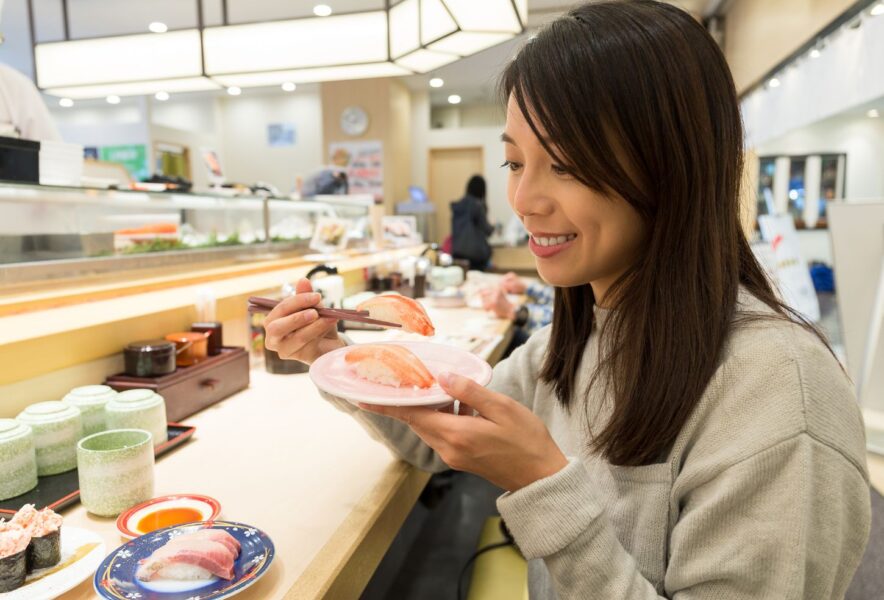The History of Sushi
The origins of sushi trace back to the 4th century BCE in Southeast Asia, where people used a method called “narezushi” to ferment fish with rice for preservation. This technique made its way to Japan, and during the Edo period (1603-1868), “nigiri sushi” was born in its current form. Edo-style sushi quickly became a popular food among the common people.
The Evolution of Sushi in Japan
In Japan, sushi evolved alongside advancements in ingredients and techniques. The development of refrigeration technology allowed for the widespread use of fresh fish in sushi, leading to the formation of unique sushi cultures in different regions. Additionally, creative sushi and high-end sushi restaurants emerged, offering diverse sushi experiences with unique ingredients and presentation methods.
The Evolution of Sushi Abroad
Sushi also gained popularity abroad, evolving uniquely in different countries. In the United States, for example, creative rolls like the California Roll and Dragon Roll, which are not found in Japan, became popular. These fusion sushi rolls incorporate local ingredients and flavors, catering to the tastes of the local population.
Popular Sushi Ingredients and Rankings
Sushi ingredients are incredibly diverse, primarily featuring fresh seafood. Tuna, salmon, shrimp, and sea urchin are representative ingredients, but rare seasonal and regional ingredients can also be enjoyed. Additionally, vegetarian sushi using vegetables and eggs, as well as creative sushi ingredients, are popular. Each ingredient offers unique flavors and textures, providing various ways to enjoy sushi.
Popular Sushi Rankings in Japan
- Tuna: Especially fatty tuna (toro) is highly popular.
- Salmon: Soft and fatty salmon is loved by many.
- Shrimp: Boiled shrimp and sweet raw shrimp are popular.
- Sea Urchin: Known for its rich flavor, sea urchin is a high-end ingredient.
- Yellowtail: Enjoyed for its balanced fat and firm texture.
Popular Sushi Among Foreign Visitors in Japan
- Salmon: Fatty, soft, and easy to eat, salmon is highly popular among foreigners.
- Tuna: Red tuna, medium fatty tuna, and fatty tuna are all popular for their unique flavors and textures.
- Shrimp: Boiled and sweet raw shrimp are favorites.
- Eel: Grilled eel with sweet soy sauce is a favorite among many foreigners.
- Scallop: Known for its sweetness and soft texture.
- Salmon Roe: The popping texture and rich flavor are well-loved.
- Crab (Imitation Crab): Both real crab and imitation crab are popular, with California Rolls being particularly well-loved.
Major Conveyor Belt Sushi Chains Popular with Japanese People
Conveyor belt sushi is a popular way to enjoy sushi casually in Japan. Here are some of the major conveyor belt sushi chains frequented by Japanese people.
- Sushiro: Sushiro is known for its fresh ingredients and reasonable prices. It offers a wide range of seasonal menus and desserts, making it popular with families.
- Kura Sushi: Kura Sushi is known for its strict hygiene standards, allowing customers to enjoy sushi with peace of mind. The “Bikkura Pon” game, where you can get a capsule toy for every five plates, is a hit with children.
- Hama Sushi: Hama Sushi features a wide variety of menu items and regional specialties from across Japan. Customers can order their favorite items via a touch panel.
- Kappa Sushi: Kappa Sushi is a long-loved chain known for its consistent quality and prices. It also offers a variety of side dishes, including ramen and desserts.
Conclusion
Sushi has uniquely evolved in Japan, and creative sushi abroad has broadened the ways it can be enjoyed. Conveyor belt sushi offers a casual and accessible way to experience Japanese food culture. Enjoy the many charms of sushi to the fullest!

Comment